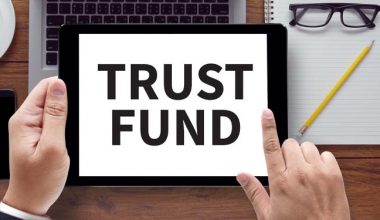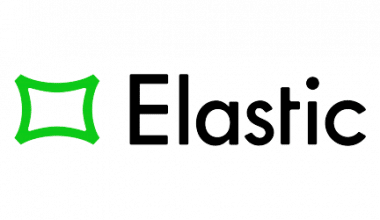In order to fund home upgrades, launch a side business, or consolidate credit card debt, many people turn to personal loans. In fact, you can do just about everything with a personal loan. Personal loans are relatively simple to apply for compared to home loans or auto loans. They are approved based on your income and credit history. Here is all the information you require regarding personal loans and how they work.
How Do Personal Loans Work
A personal loan is a one-time payment made by a bank, credit union, or internet lender to you. Then, over a defined length of time, you repay the loan in monthly payments together with interest charges. Personal loans, as opposed to other loans for a particular kind of purchase, such a home or auto loan, can be utilized for nearly any reason.
As an illustration, you could use a personal loan to:
- Purchasing a car
- Paying rent and buying food items while you’re unemployed.
- Eliminate credit card debt
- Pay medical expenses
- Go on vacation
- Get a boat.
- Purchase braces for your child or yourself.
- Pay for additional costs, invoices, or expenditures.
Where Can you Get a Personal Loan?
Several financial institutions, including traditional (branch-based) and online lenders, offer personal loans.
Most Typical Loan Types
There are a few subcategories you should be aware of even if all personal loans fall under the same general category:
- Personal loans for good credit: Several personal lenders concentrate their efforts exclusively on “prime” borrowers or people with good credit histories.
- Personal loans for bad credit — Some businesses offer personal loan products that are intended for consumers with less-than-ideal credit.
- Personal loans for debt consolidation: You can combine (or “consolidate”) several debt payments (credit cards, auto loans, etc.) into a single straightforward payment thanks to these loans. Also, a debt consolidation loan typically has a reduced interest rate, which means your monthly payment will generally be smaller.
- Medical loans – A medical loan is typically taken out to cover medical expenses.
- Renovation loans: These loans can be used to finance home renovations like adding a pool, updating the kitchen or bathroom, or finishing the basement.
- Coronavirus hardship loans: If COVID-19 reduced your income, you might be eligible for a coronavirus hardship loan. These loans are modest and are intended to assist you in covering your expenses during a brief period of unemployment.
What Effect Does a Personal Loans Have On Your Credit Score to Work With?
If you pay off your personal loan on schedule, it can raise your credit score. This is particularly valid if a personal loan is utilized to combine credit card debt. For starters, it is widely thought that installment debt (loan debt) is preferable to revolving debt (credit cards). Also, after consolidation, the borrower’s credit card utilization rates will be significantly reduced (you won’t be extremely near to maxing out your credit cards). It may also significantly raise your score.
How to Choose a Personal Loan
There are a few things you should be aware of when looking around for a personal loan in order to make the best choice for your financial circumstances.
#1. Your Monthly Income and Credit Score
When applying, make sure you meet the minimum credit score standards set by each lender. Also, some loans have income requirements.
Consider secured vs. unsecured loans if your income or credit score is weak. The majority of personal loans are “unsecured” loans because they don’t demand collateral. Hence, if you are unable to repay the loan, the lender cannot seize your vehicle or house. Yet, you might not be eligible for an unsecured loan if your credit is bad. If so, you might need to provide collateral (such as funds from a savings account or CD) in order to be approved for a loan.
Details of the loan you want
One of the most crucial pieces of information you’ll need to know before choosing a loan is how much you want to borrow and how long you want to take to pay it back. The following points should be remembered:
- Interest rate: This is likely the most crucial aspect to consider because it will determine how much your loan will ultimately cost you in the long run. The lowest interest rate is what you want to guarantee. Pay close attention to annual percentage rates, or APRs, which comprise both the interest rate and origination fees for the loan.
- Loan term: How long you have to pay off the loan is determined by its term. In order to reduce interest costs, you want to pay off your loan as early as you can. But, loans with shorter terms also have higher monthly payments. Of course, you never want to take out a payment schedule you can’t meet.
- Amount borrowed. From $1,000 to $100,000 can be borrowed for personal use. Never borrow more money than you absolutely need; only take out what you absolutely need.
How to Apply for a Personal Loan
For personal loans to work, you need to apply through the following steps:
#1. Examine Your Credit Report.
Your capacity to borrow money and obtain a low-interest rate is significantly influenced by your three-digit credit score. Due to the perceived lesser risk, you pose as a borrower, lenders are more likely to offer you advantageous rates the better your score.
#2. Go Shopping and Become Prequalified
As APRs can differ significantly amongst lenders, it is advisable to compare your options by shopping around. Prequalification from most lenders enables you to view loan offers with a mild credit check. You can use this to see the different loan terms you might be eligible for. Prequalification does not, however, ensure that you will be accepted if you later submit a formal application.
#3. Analyze Loan Offers
Compare your loan terms and each lender’s fees after prequalifying with a few. Typically, the APR will take both the interest rate and fees into account. It’s time to proceed if you’ve located a lender you’d like to work with.
#4. Collect Supporting Files
When you apply for the loan, the lender could ask you for more paperwork. To be prepared for the application, start gathering documents like evidence of income (such as copies of pay stubs), proof of debt (such as mortgage statements), and bank account statements right away.
#5. Apply Formally
Now you’ll present a formal application to your preferred lender. In order to apply for a personal loan online, you typically have to consent to a rigorous credit check. Observe the directions on the application, and turn in any paperwork the lender requests.
#6. Watch for a Loan Decision.
Upon receipt of your entire application and a credit report pull, lenders typically make judgments quite fast. You might even get a response in a matter of hours. The lender will determine how long it takes for you to get your personal loan. Some companies provide electronic bank account deposits with same-day funding.
Mistakes with Personal Loans and How to Avoid Them When You Work with Them
Although obtaining a personal loan is a straightforward process, if you are unaware of your possibilities, you risk making some typical blunders.
- Overspending: Before you apply for a personal loan, it’s crucial to assess your financial situation to determine how much you can afford to borrow and repay each month. It’s crucial to consider if you’ll be able to make your monthly payments even if you encounter an unplanned emergency expense.
- Accepting the first offer you receive: If you accept the first offer you receive, you might be missing out on the chance to save money. You can examine which lender can provide you with the greatest rate, terms, and benefits by receiving various offers.
- Ignoring fees: If you don’t read the small print of your loan agreement, it’s simple to overlook the information about fees. Although many lenders don’t charge any fees at all, personal loan origination and late fees are frequently assessed by lenders.
Reasons Why Personal Loans are Essential
It’s possible that lenders will market personal loans under many names as you look for them. In some circumstances, the loan’s title or goal may be significant. Your charges and even reputation in the eyes of lenders can be influenced by the purpose of your loan. For instance, depending on the loan’s intended use, certain lenders may provide varying personal loan conditions or limit their personal loan offerings to certain uses. Personal loans are also prohibited by many lenders.
How Do You Receive Money from a Personal Loan?
The money from a personal loan is often transferred right into your checking account.
Is a Personal Loan Ever a Good Idea?
When you use a personal loan to achieve a financial objective, such as consolidating debt or improving your property to raise its value, it can be a smart option.
What Is the Risk of a Personal Loan?
High-interest rates, prepayment penalties, origination costs, harm to your credit score, and an overwhelming debt load can all be risks of taking out a personal loan.
What Are the Disadvantages of a Personal Loan?
Drawbacks to personal loans:
- Rates of interest may be greater than other options.
- more conditions for eligibility.
- Penalties and fees may be very substantial.
- Monthly payment increase.
- a greater debt burden.
- greater payments compared to credit cards.
- Possible harm to credit.
What Are Three Types of Loans You Should Avoid?
Loans You Should Never Take Out:
- Title Loans.
- Cash Advances.
- Personal Loans from Family.
- 401(k) Loans.
- Payday Loans.
- Home Equity Loans for Debt Consolidation.
Can a Person Go to Jail for Not Paying a Personal Loan?
Negative consequences of not repaying a personal loan include fees, fines, defaulting on the loan, having your account turned over to collections, being sued, and a sharp decline in your credit score.
Related Posts
- Can You Use a Personal Loan to Start a Business? What You Should Do
- ONLINE LOANS: BEST OPTION TO LOOK OUT FOR (+ HOW TO APPLY GUIDE
- HOW TO GET A BUSINESS LOAN WITH BAD CREDIT: All You Should Know.
- HOW DO BUSINESS LOANS WORK: What It Is and How It Works






